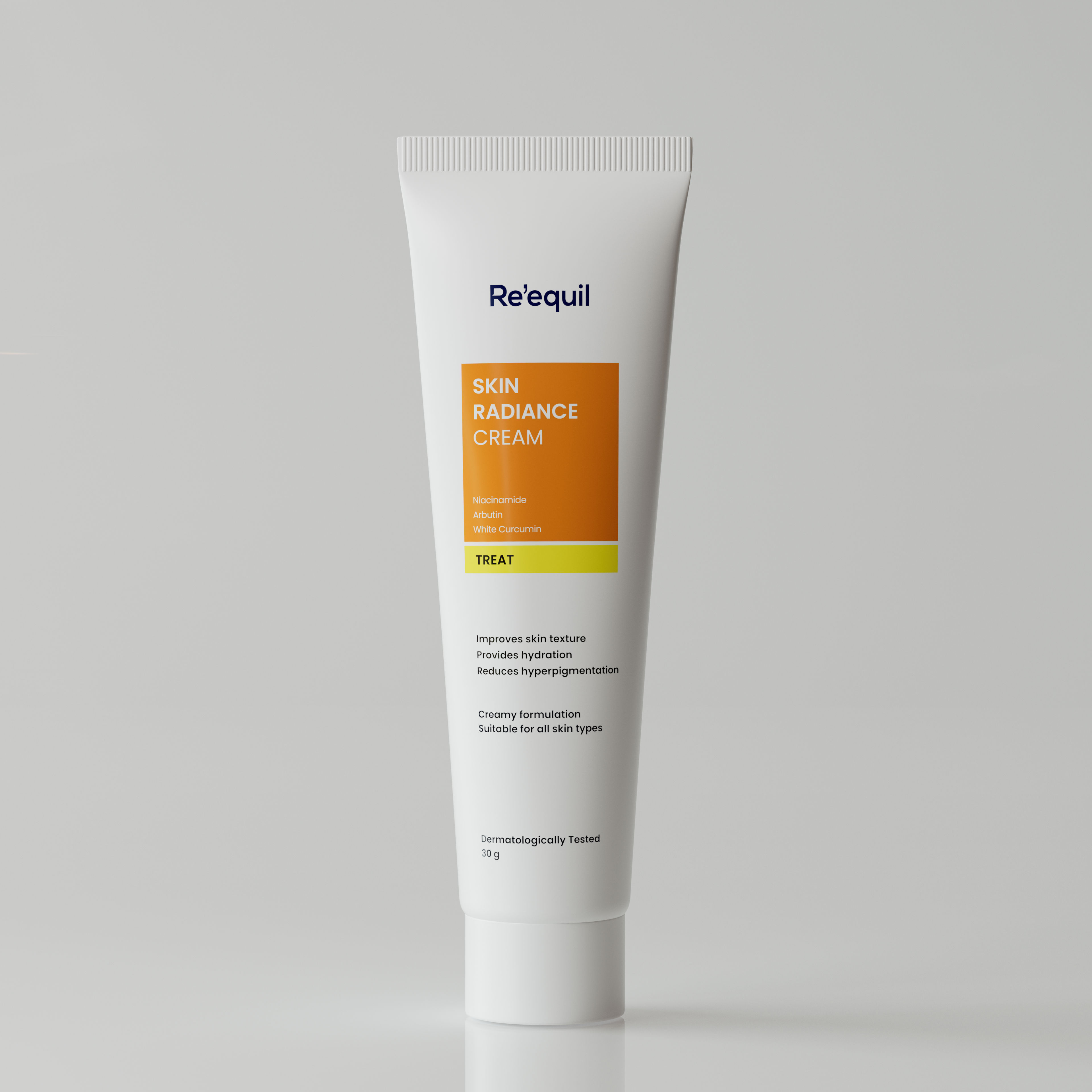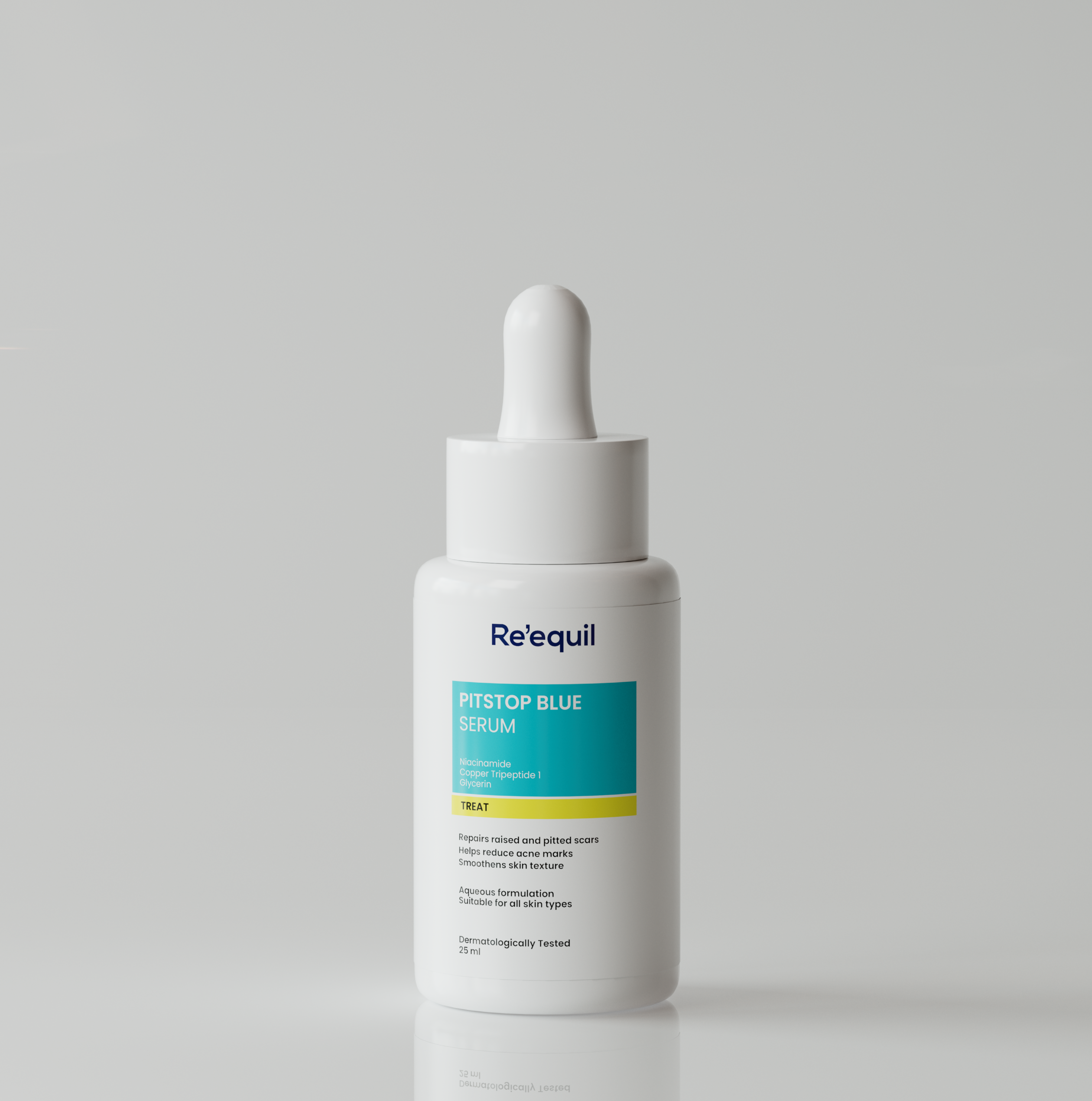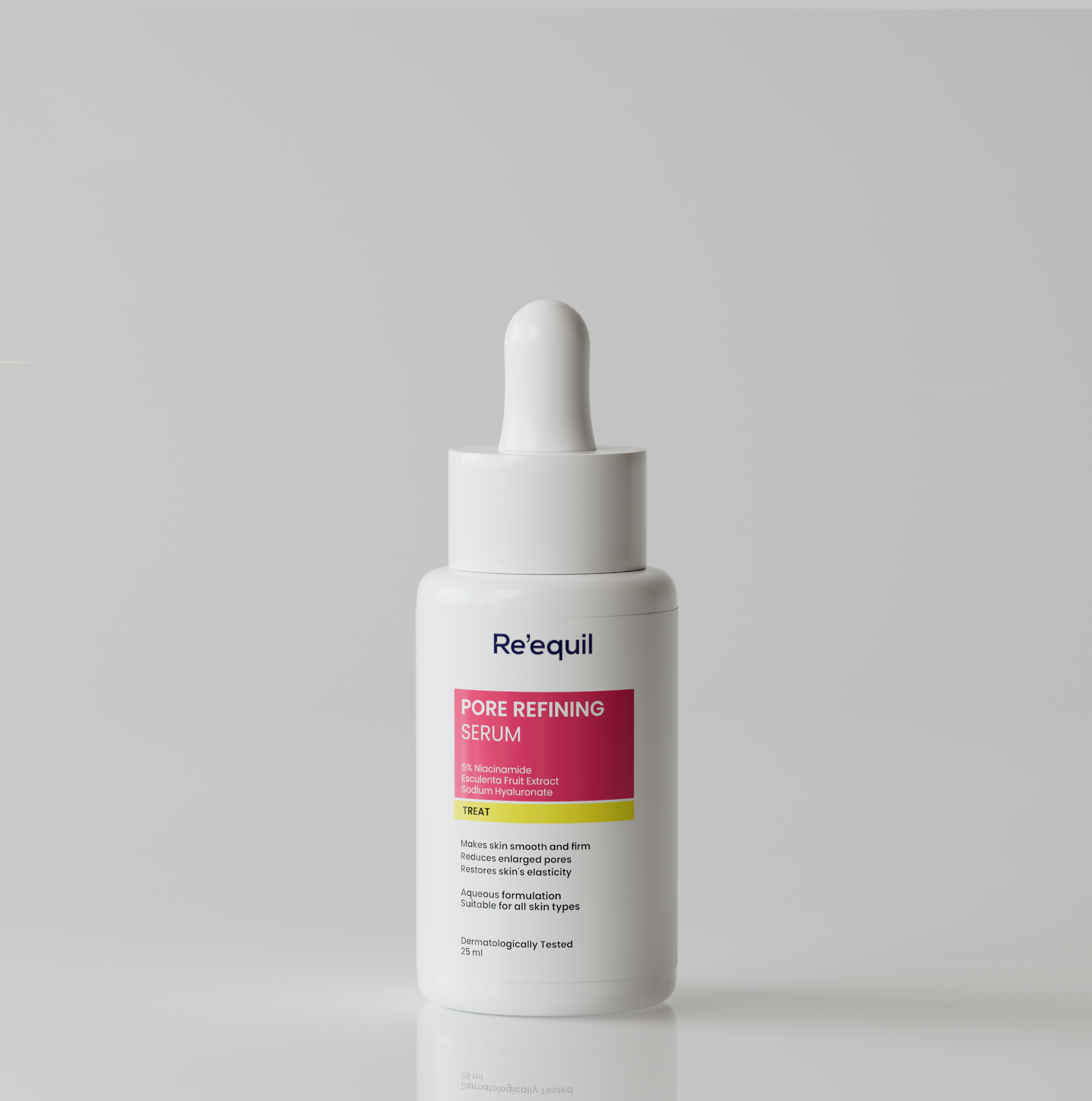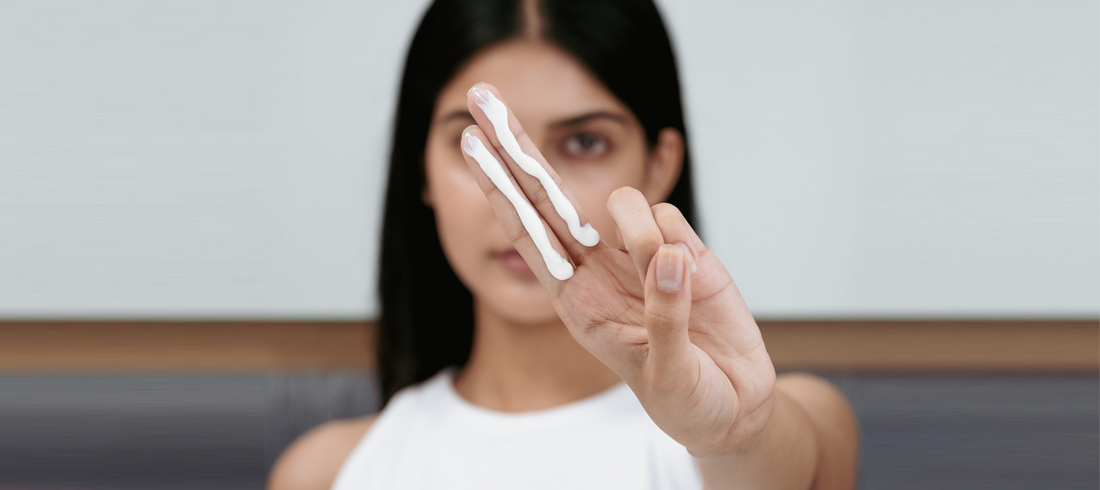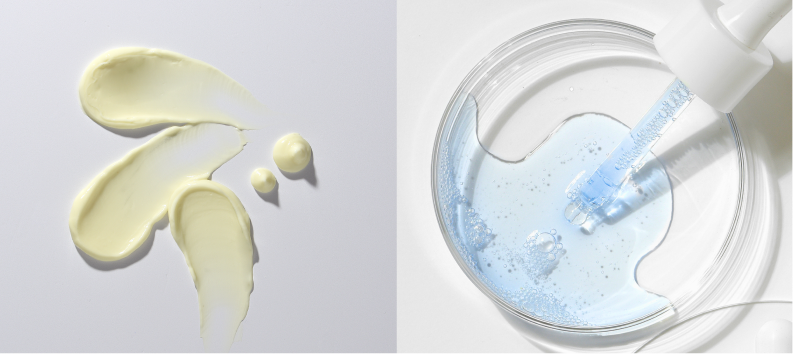Dry skin can be a persistent challenge, often leaving your face feeling tight, flaky and uncomfortable.
Finding the right skincare ingredient is essential to keeping your skin hydrated and healthy.
Among the various skincare ingredients available, Niacinamidehas gained popularity for its versatility and effectiveness.
But is Niacinamide good for dry skin?
Let's explore the benefits of Niacinamide for dry skin, how to pair it with other products, potential side effects, and tips on incorporating it into your skincare routine.
What are the benefits of Niacinamide for dry skin?

1. Strengthens the skin barrier function
A key benefit of Niacinamide is its ability to strengthen the skin’s protective barrier. The skin barrier plays an essential role in retaining moisture and protecting against external irritants.
When this barrier is compromised, it can lead to dryness and sensitivity. Niacinamide enhances the production of ceramides, which are lipids that help maintain a healthy skin barrier.
This results in better moisture retention and reduced dryness, making Niacinamide good for dry skin.
2. Improves Hydration
Hydration is critical for dry skin, and Niacinamide is particularly effective at enhancing the skin’s moisture levels.
By boosting the production of natural moisturising factors (NMFs), Niacinamide helps the skin retain water, making it more hydrated and supple. This improved hydration is a key reason why Niacinamide is good for dry skin.
3. Reduces skin inflammation
Dry skin often comes with redness and irritation.
Niacinamide is known for its anti-inflammatory properties, which can soothe and calm the skin.
This makes Niacinamide an effective topical skincare ingredient for dry skin that is prone to sensitivity or conditions like eczema and rosacea.
4. Reduces skin ageing and hyperpigmentation
Niacinamide boosts collagen production, which helps maintain skin elasticity and reduces the appearance of fine lines, acne lesions and wrinkles.
Additionally, Niacinamide inhibits the transfer of melanosomes (pigment-containing cells) to the skin's surface, thereby reducing dark spots and evening out skin tone.
5. Improves skin texture
Dry skin is often associated with uneven texture and dull appearance.
Star ingredient, Niacinamide, helps to improve skin texture by promoting cell turnover and reducing the appearance of fine lines.
It also brightens the skin, evening out tone and enhances overall radiance.
What skincare ingredients can you combine with Niacinamide for enhanced skin hydration?
To maximise the benefits of Niacinamide for dry skin, pairing it with complementary ingredients can enhance its effectiveness.
Here are some ideal combinations:
1. Hyaluronic Acid
Hyaluronic acid is a deeply hydrating ingredient that pairs perfectly with niacinamide. As a potent humectant, it draws moisture into the skin, amplifying niacinamide’s hydrating benefits.
When used together, these ingredients help keep the skin moisturised, supple and youthful whilst effectively combating signs of ageing.
READ - This is why you should start using Niacinamide and Hyaluronic Acid together
2. Vitamin C
Vitamin C is a powerful antioxidant, but it can be unstable and lose its effectiveness when exposed to light or high temperatures.
Niacinamide helps maintain the stability of vitamin C, ensuring that it remains effective over time.
This combination targets a wider range of skin issues because vitamin C brightens the skin and reduces pigmentation, while niacinamide improves skin texture, reduces dullness and evens out the skin tone.
Together, they offer a comprehensive approach to achieving a more radiant and even complexion.
To use them together:
- Layering: Apply vitamin C first (as it typically has a lower pH), followed by Niacinamide.
- Combination Products: Some formulations already combine these ingredients in a single product, simplifying the routine.
- Morning Use: Consider using them in your morning routine, followed by sunscreen, to protect against oxidative stress from UV exposure.
Here Is What Dermatologists Say About Using Vitamin C And Niacinamide Together
3. Ceramides
Since Niacinamide boosts Ceramide production, combining it with products that also contain ceramides can enhance the skin’s moisture retention.
The combination of Niacinamide and Ceramides helps reduce free radicals, which are responsible for breaking down collagen and elastin. As a result, your skin stays hydrated and maintains its elasticity and firmness.
4. Esculenta Fruit Extract (Contains Vitamin B5)
Niacinamide and Esculenta Fruit Extract, when combined, creates a powerful synergythat offers rich antioxidant properties, which help protect the skin from environmental stressors like UV radiation and pollution.
This protection is crucial in preventing premature ageing and reducing the risk of hyperpigmentation, especially for dry skin.
5. Occlusive Moisturisers with bioactive agents
After applying Niacinamide, using an occlusive moisturiser containing ingredients like shea butter, squalane, and Althaea Officinalis extract can help seal in moisture.
These moisturisers form a protective layer on the skin's surface, which prevents moisture from escaping.
Combining niacinamide with an occlusive moisturiser is particularly beneficial for dry skin, as it enhances hydration and maintains moisture effectively.
Are there any side effects of Niacinamide for dry skin?
While Niacinamide is generally well-tolerated, especially by dry skin, there are some possible side effects to be aware of:
1. Mild Irritation
Some users might experience mild irritation when first using Niacinamide, particularly if they start with a high concentration.
Symptoms may include redness, itching or a slight burning sensation.
If this happens, starting with a lower concentration and gradually increasing it can help.
2. Breakouts
Though Niacinamide is non-comedogenic, some people may experience breakouts when they first start using it.
This reaction is usually temporary as the skin adjusts. Still, it does not negate that Niacinamide is good for dry skin overall.
READ - 4 Reasons Why Niacinamide May Cause Breakouts
3. Allergic Reactions
In rare cases, Niacinamide may cause an allergic reaction, leading to symptoms like swelling, severe redness or hives.
If this happens, it is essential to discontinue use and consult a dermatologist. However, for most people, Niacinamide does not cause severe reactions.
Conclusion
Niacinamide is a versatile and beneficial ingredient for those with dry skin. From strengthening the skin barrier to improving hydration and soothing inflammation, there are many reasons why Niacinamide is good for dry skin.
Pairing Niacinamide with complementary ingredients can further enhance its benefits, helping you achieve smoother, more hydrated skin.
While Niacinamide is generally safe and effective, starting with a lower concentration can help minimise any potential side effects.
With the right approach, Niacinamide can be a valuable addition to your skincare regimen, offering lasting benefits for dry skin.





